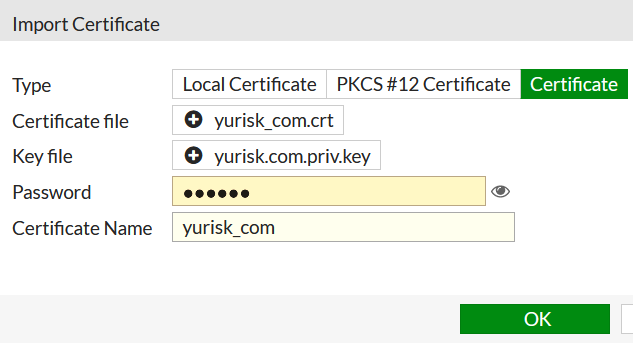

Configuring load balancing describes how to configure FortiOS server load balancing.

Basic load balancing configuration example introduces FortiOS server load balancing by providing a basic configuration example. This FortiOS Handbook chapter contains the following sections: Inside FortiOS: Server Load Balancing highlights the features and benefits of FortiOS server load balancing. This document describes all server load balancing configuration options and contains detailed configuration examples. How this chapter is organized This document contains detailed information about how to configure FortiOS server load balancing to load balance various types of traffic to multiple backend servers. Proxy mode is required for persistence, HTTP Multiplexing, SSL offloading and other advanced HTTP and SSL features. If Inspection mode is set to Flow-based, you can only configure Virtual Servers with Type set to HTTP, TCP, UDP, or IP. To be able to use all of the features described in this chapter you should go to System > Settings and setting the Inspection Mode to Proxy. Session persistence is supported based on the SSL session ID or based on an injected HTTP cookie.īefore you begin Before you can configure server load balancing on the GUI go to System > Feature Select and turn on Load Balance. The load balancer supports HTTP, HTTPS, IMAPS, POP3S, SMTPS, SSL or generic TCP/UDP or IP protocols. Traffic can be distributed across multiple backend servers based on multiple methods including static (failover), round robin, weighted to account for different sized servers, or based on the health and performance of the server including round trip time, number of connections.

Introduction FortiOS server load balancing includes the features you would expect of any server load balancing solution. Server Load Balancing for FortiOS 5.6 Fortinet Technologies Inc. IP, TCP, and UDP load balancing Example HTTP load balancing to three real web servers Web-based manager configuration CLI configurationĮxample Basic IP load balancing configuration Example Adding a server load balance port forwarding virtual IP Example Weighted load balancing configuration GUI configuration CLI configurationĮxample HTTP and HTTPS persistence configuration CLI configuration: adding persistence for a specific domain SSL/TLS load balancing SSL/TLS offloading Separate virtual-server client and server TLS version and cipher configuration Setting the SSL/TLS versions to use for server and client connections Setting the SSL/TLS cipher choices for server and client connections Protection from TLS protocol downgrade attacks Setting 3072- and 4096-bit Diffie-Hellman values Additional SSL load balancing and SSL offloading options SSL offloading support for Internet Explorer 6 Selecting the cipher suites available for SSL load balancing Disabling SSL/TLS re-negotiation

HTTP and HTTPS load balancing, multiplexing, and persistence HTTP and HTTPS multiplexing Preserving the client IP address Preserving the client IP address in a different HTTP header HTTP and HTTPS persistence How HTTP cookie persistence options work HTTP host-based load balancing Host load balancing and HTTP cookie persistenceĢ1 22 22 22 22 22 22 23 23 23 24 25 26 26 26 26 26 26 27 27 27 27 27 27 28 28 28 28 28 28 28 28 29 29 Round Robin Weighted First Alive Least RTT Least Session HTTP Host Session persistence Real servers Real server active, standby, and disabled modes Adding real servers from the web-based manager Adding real servers from the CLI Health check monitoring Name Type Port Interval URL Matched Content Timeout Retry Load balancing limitations Monitoring load balancing Virtual Server Real Server Health Status Mode Monitor Events Active Sessions RTT (ms) Bytes Processed Graceful Stop/Start Load balancing diagnose commands Logging Diagnostics Real server diagnostics Inside FortiOS: Server Load Balancing Server Load Balancing combined with NGFW and UTM protection SSL/TLS offloading SSL/TLS content inspection Health Check Server Monitoring and Management HTTP Multiplexingīasic load balancing configuration example Configuring load balancing Load balancing and other FortiOS features Configuring load balancing from the GUI Name Type Outgoing Interface Virtual Server IP Virtual Server Port Load Balance Method Persistence Health Check HTTP Multiplexing Preserve Client IP SSL Offloading Mode Certificate Configuring load balancing from the CLI Load balancing methods Source IP Hashġ2 16 18 18 18 18 19 19 19 19 19 19 20 20 20 20 20 20 21 21 TABLE OF CONTENTS Change Log Introduction Before you begin How this chapter is organized What's new for server load balancing in FortiOS 5.6 IPv6, 6to4, and 4to6 server load balancing (280073) Improved Server load balancing GUI pages (404169) Wednesday, ApFortiOS™ Handbook - Server Load Balancing 07-20170405 FortiOS™ Handbook - Server Load Balancing VERSION 5.6.0


 0 kommentar(er)
0 kommentar(er)
